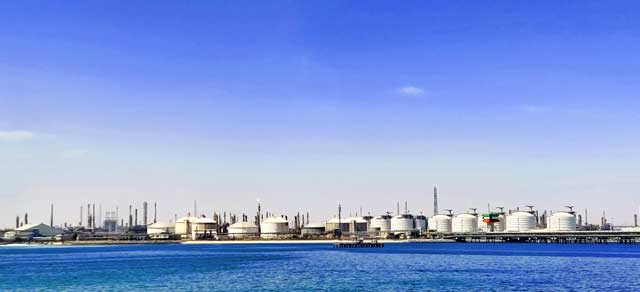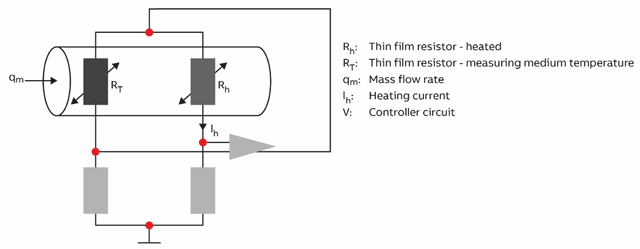
Protecting health and safety at tank farms used as large warehousing facilities for volatile liquids is a serious business. For many facilities, using an inert gas like nitrogen to fill the “empty” space in each tank is an effective safety measure, but is expensive. In this article, David Bowers, Product Manager UK & Ireland Measurement and Analytics at ABB, describes how an innovative measurement application ensured safety was preserved and costs reduced.
Tank Farms
Tank terminals or tank farms are large storage facilities for chemical warehousing. They can be found at shipping ports where vast volumes of chemicals are imported or exported. They are also commonly found at airports where tanks of petrochemicals are stored for use to fuel the aircraft.
Tank blankets for safety
There are strict regulations in place directing the safe operation of chemical warehousing designed to protect health and safety on site and in the surrounding areas. Effective combustion requires a balance of three elements, namely fuel or the volatile liquids stored at the tank farm, oxygen in the air around us and a source of ignition. Removing one of the three elements prevents fire. Although measures are in place to reduce sparks that may cause ignition, it would be very difficult to rule out all sparks or sources of ignition. Use of a tank blanket provides an effective barrier between the volatile fluid and the oxygen in the air thereby preventing combustion in the case of a spark.
A tank blanket is a shield of gas like a pillow that fills the “empty” space at the top of the tank displacing the air in the tank. An inert gas such as Nitrogen is often used to form a barrier between the flammable liquid and the oxygen in the air required to ignite a flame. Nitrogen is the most cost-effective inert gas to use for this purpose, but it by no means cheap. Whilst it is abundant, its production process requires it to be separated from the air by through cooling and after separation it will need to be compressed, transported and stored. Its careful use can cut costs at tank farms considerably.
Tank blanket benefits
The benefits of Nitrogen blankets extend beyond adding a layer of protection to prevent volatile fuels igniting. They also protect the metal tanks from rust and corrosion in the air, and they add pressure to allow fluids to drain more efficiently form the tanks under gravity.
To charge or not to charge
A tank farm in Belgium had multiple operators making use of the storage facilities. To deliver the most cost-effective solution to their customers for renting tanks it was resolved to bill the third parties directly for nitrogen use for tank blanketing. Volume flow is the most common metric used to determine the flow of liquids; however, it is rarely used for gas due to the vast volume changes that can occur with a change in either the temperature or pressure of the gas. To determine an accurate flow rate for gases a mass flow is preferable.
Thermal mass flowmeters were used for this fiscal purpose to measure the mass of nitrogen used and to charge each vendor only for the nitrogen used in tank storage. The nitrogen level changes as hydrocarbons are added or removed, and as such there is an ongoing demand for nitrogen blanketing at the facility as different vendors will use varying amounts.
ABB FMT430 (SensyMaster) thermal mass flowmeters are suitable for this application because they have been ATEX rated ensuring they are low power and reducing the likelihood of a spark. Tank farms are classified zone 1 because of the likely explosive atmosphere consisting of air and flammable substances. A thermal mass flowmeter is suited to low pressure applications required in an area defined zone 1.
Coriolis mass flowmeters could also be used for this application, however thermal mass flowmeters are specialised for gas, have less restriction on the line size, offer 150:1 turndown. The additional consideration for Coriolis mass flowmeters is that they would create a pressure drop across them and are less well suited to low pressure applications such as these.
What is a thermal mass flowmeter?
Thermal mass flowmeters operate on the hot-film anemometer principle, where the amount of heat that a gas carries away from a probe tip is measured as it flows past. The temperature of the surrounding gas is checked by a reference probe, while the measurement probe is maintained at a constant, higher temperature. The amount of energy needed to keep the measurement probe up to temperature depends directly on the mass of the passing gas.
With a known and constant gas composition, the mass-flow can be determined by calculating the heater current / mass-flow curve with no need for additional pressure and temperature compensation. Factoring in the standard density of the gas produces the standard volume flow.

The operating principles of a hot film anemometer are illustrated by the diagram above. The gas stream flows past two temperature-sensitive resistors, RT and Rh, which each form part of an electrical bridge circuit. Due to the chosen resistance ratio RH < RT, RH is heated by the current IH, and RT adopts the same temperature as the gas. The current IH is pre-set by the electronic control circuit to produce a constant temperature difference between the heated resistor RH and the temperature of the gas.
The electrical power generated with resistor RH exactly compensates its loss of heat to the gas flow. As this loss of heat is dependent on the number of particles which collide with the surface of resistor RH, IH represents a measure of the mass flow rate.
No nitrogen, no problem
ABB instruments have the capability of customising the gas using the ‘gas engine’, which allows users to change line size of pipe and mixture of gas without having to calibrate it. It would be possible to use a single instrument for different gases should an alternative inert gas be used.
That said, calibration is important for applications where customers are charged by mass. It can be costly both in terms of the expertise required to perform the calibration and any downtime incurred by the instrument being offline. The ABB Ability™ SRV500 software allows the instrument to be checked against its original calibration and manufacturing parameters. This data is stored onboard and during verifications the meters performance is checked against this ‘fingerprint’ data. If the verification test results are within the limits set the meter will pass, and a certificate of verification for the instrument will be produced with a clear ‘Pass’ or Fail’ notification. Applications such as My Measurement Assistant™ mean the device can be configured without the requirement for support from an ABB engineer. These digital solutions are helping instrument owners to reduce the cost of ownership and increase productivity.
Find out more about industrial flow measurement from ABB: https://new.abb.com/products/measurement-products/flow/thermal-mass-flowmeters/sensymaster-fmt400

